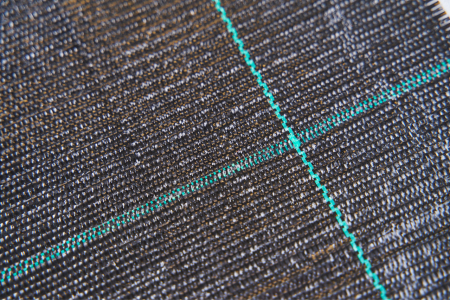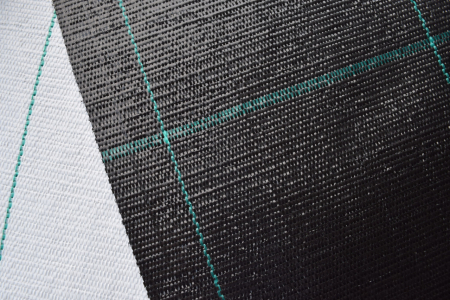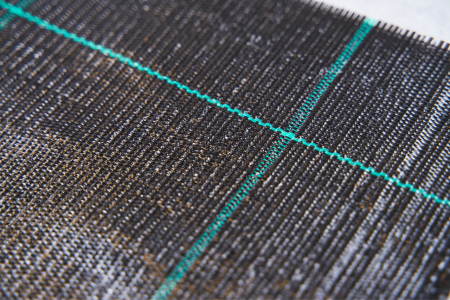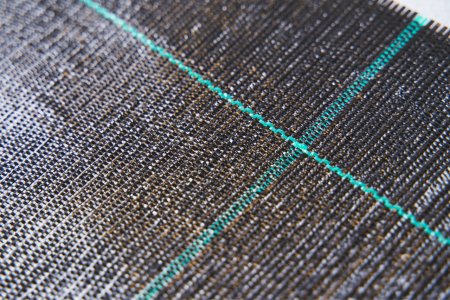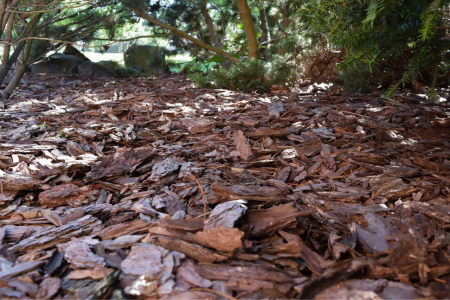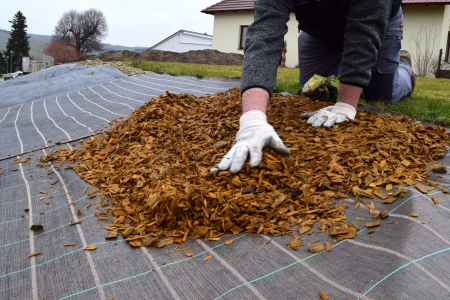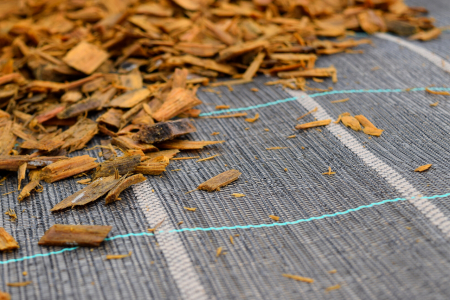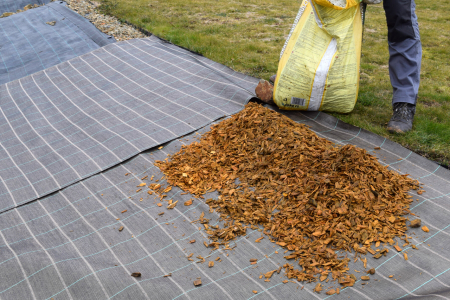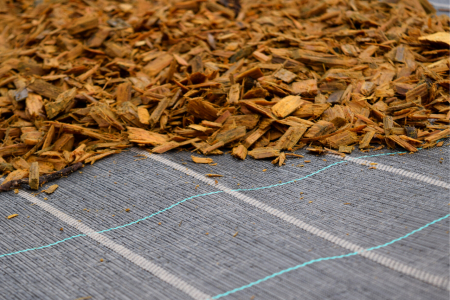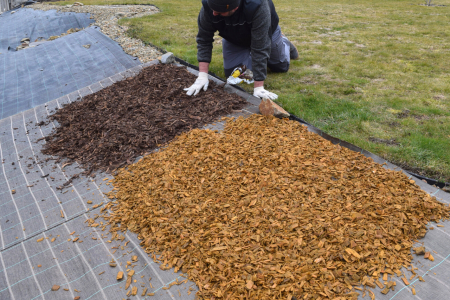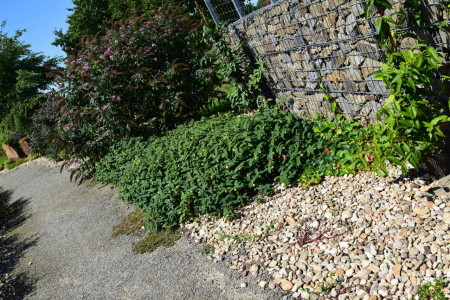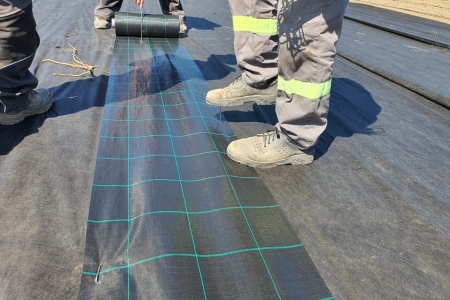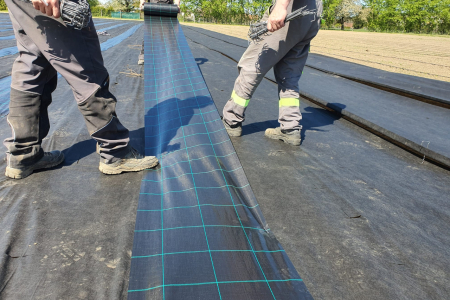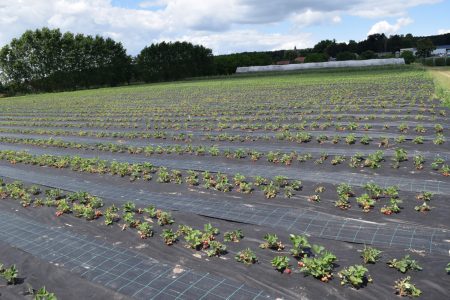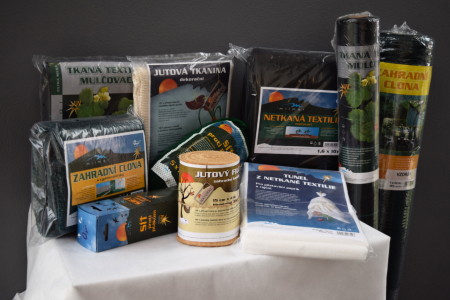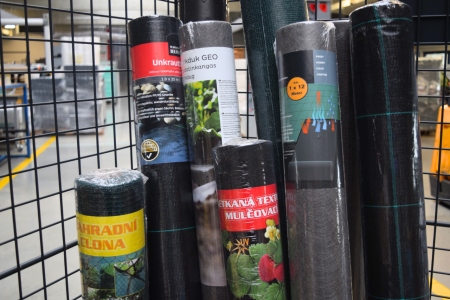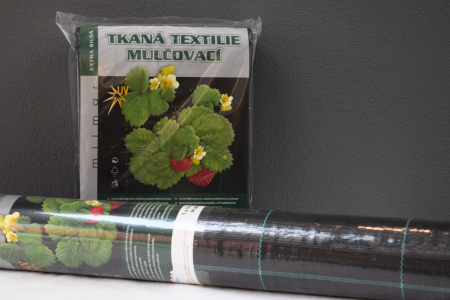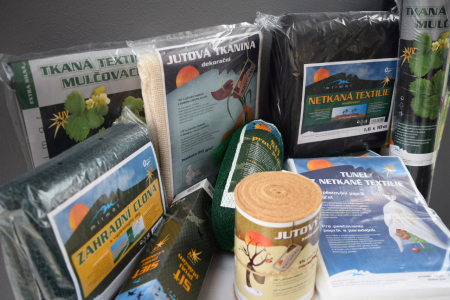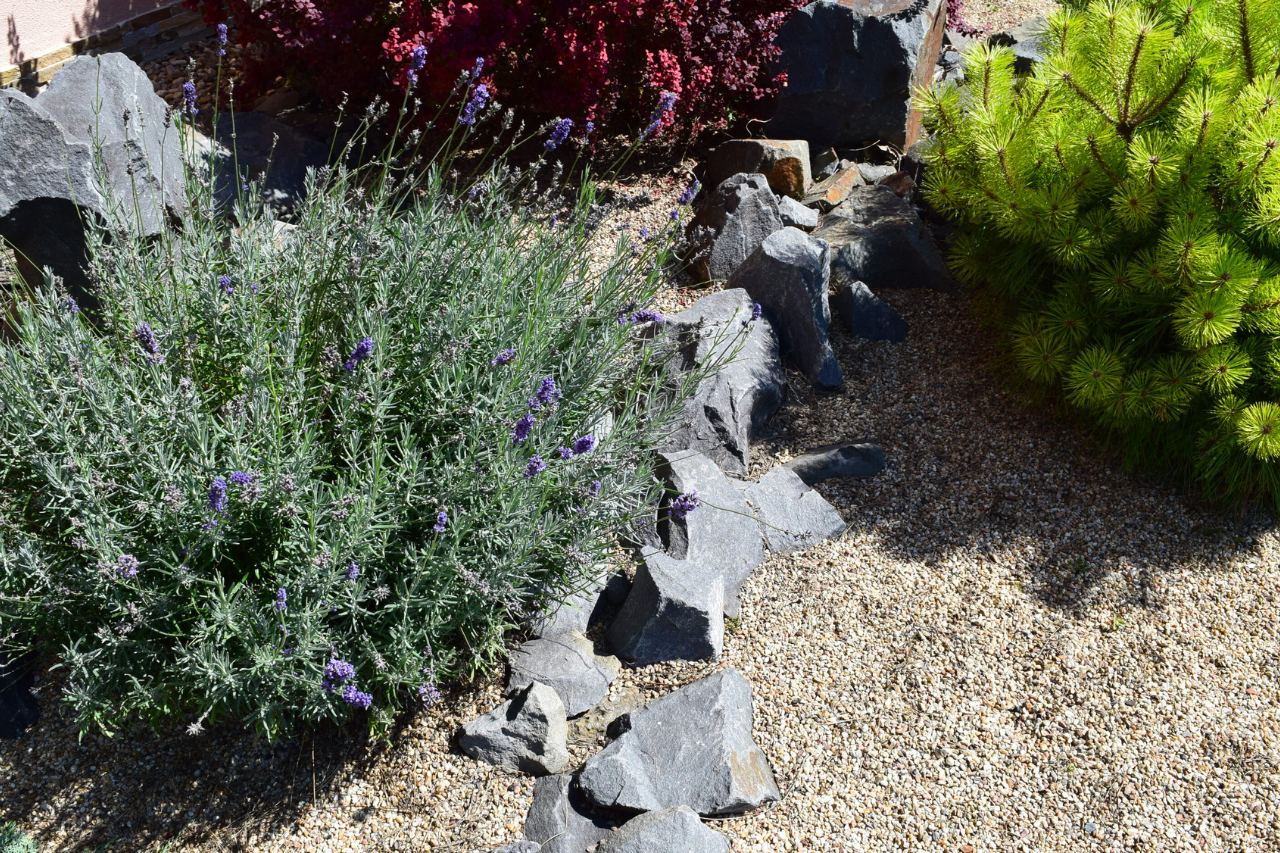
Woven Landscape Fabric
Widely used in parks and gardens, a high-quality landscape fabric is UV-resistant and lasts in a good condition for up to 5 years.
Contrary to nonwoven fabrics, landscape fabrics are usually manufactured by weaving. There are multiple weaving techniques; bear in mind that the technique of choice has a great impact on the fabric’s final qualities (such as its water permeability — more on that later on).
Using Landscape Fabric in Your Garden
Weed Control
To reduce and control weeds, gardeners often put mulch or pebbles on their flower beds. Mulching does slow the weeds down, but in the end they always find their way through.
Layering a landscape fabric under your mulch significantly reduces the amount of weeds that grow through, and makes the maintenance of your flower beds much easier.
OUR TIP: Here's how to pick the best landscape fabric.
Make Mulch Last Longer
When put directly on the soil, mulch eventually starts to sink into the ground. It’s a natural process that ends up with your mulch disappearing underground, making you add more and more layers as time goes on. A landscape fabric laid underneath your mulch makes it last much longer.
Heavy-duty landscape fabric is the perfect base layer underneath your mulch.
Keep Mulch in Place on Sloped Terrain
If you need to put mulch on a sloped terrain, pick a special landscape fabric for sloped gardens.
It’s reinforced with anti-slippery cotton stripes that hold the mulch in place (even when crooked) — cotton is less slippery than other landscape fabrics (woven from plastic stripes). Thanks to the cotton stripes, mulch stays put even during heavy rains.
The light horizontal stripes on the landscape fabric are made of cotton and keep mulch from slipping down
Base Layer for Garden Paths
Landscape fabric under gravel is a popular solution when building garden paths. The fabric effectively separates gravel from soil, making it easy to remove the gravel layer in case you decide to move your path elsewhere.
Landscape Fabric Weight
At Milmar, we process landscape fabric of 90, 100, and 130 g/m2 of fabric weight. The two lighter variants are popular in hobby markets. The highest fabric weight is usually preferred by professional gardeners and farmers.
At the Research and Breeding Institute of Pomology in Holovousy in the Czech Republic, they use landscape fabric in between strawberry beds.
Woven landscape fabric is firmer than the nonwoven fabric which they put directly under and around the strawberry plants. You can ride a small tractor on the landscape fabric without damaging it.
Landscape fabric (chequered stripes) is used alongside nonwoven fabric on strawberry fields
Professional gardeners also like to use landscape fabric as a protective layer under flower pots with plants for sale.
Landscape Fabric Colours
Black is certainly the most common landscape fabric colour, but you can come across its white version, too. Most landscape fabrics come in a chequered pattern which helps gardeners keep a straight line when planting new flowers or vegetables.
Occasionally, you might come across other colours of landscape fabric, such as brown, green or combined (grey with brown, black with white etc.).
Landscape Fabric Production
Landscape fabric is manufactured on modern looms. Horizontal threads (the warp) are stretched on the loom, and vertical threads (the weft) are woven through them. Both warp and weft threads are made of polypropylene stripes.
Most landscape fabric manufacturers would use one of the two most common weaving techniques: plain weave or tight weave. The plain weave has weft stripes laid right next to each other quite loosely.
The plastic stripes create a cohesive layer and the final fabric isn’t very water-permeable. Therefore, a plainly-woven landscape fabric is considered of lesser quality when it comes to garden use.
At Milmar, we pick only tightly-woven landscape fabric. This means that the manufacturer fastens every added weft thread tightly. This deforms the previous thread slightly, making the entire fabric tighter, firmer and more water-permeable. All these qualities pay off in every garden.
Your Supplier of Landscape Fabric
At Milmar, we specialise in processing woven as well as nonwoven fabrics and plastic mesh. We supply our goods mostly to resellers — garden centres, hobby markets and others.
For our customers, we make woven and nonwoven fabrics in packaging according to their requirements. Get in touch to find out what we can do for you!
